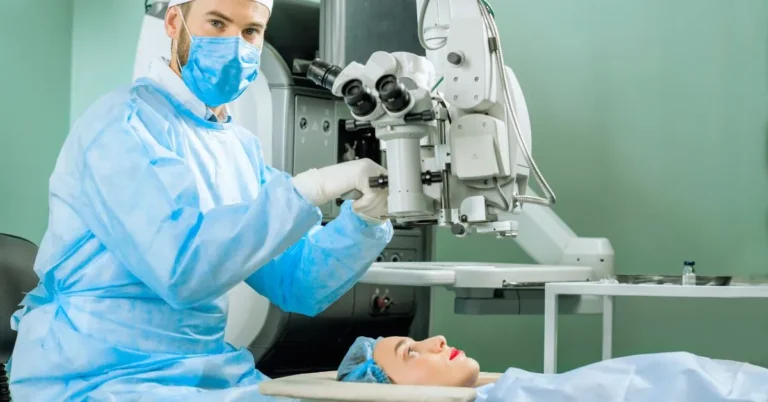Luminacare Health Network: Revolutionising Geriatric Care with Innovation and Technology
The healthcare industry has always been challenged with providing high-quality, cost-effective, and accessible care, especially for the elderly and those with chronic conditions. Luminacare Health Network stands at the forefront of this challenge, leveraging technology and innovative care models to bridge the gaps in patient care, particularly for geriatric populations. With its unique focus on unifying, coordinating, and enhancing healthcare delivery across various settings, Luminacare is not just filling gaps in healthcare—it is reshaping how patient care is managed across the continuum.
A Vision for Comprehensive and Coordinated Care
Luminacare Health Network, though relatively young in the healthcare landscape, is distinguished by its mission to provide integrated care for geriatric patients, ensuring that they receive comprehensive support across various stages of their healthcare journey. This includes care within skilled nursing facilities, assisted living environments, and even in the comfort of their own homes.
The organization’s focus on this population highlights a critical need in healthcare: managing the increasing complexity of ageing patients who often require multiple healthcare services. Many geriatric patients are navigating chronic conditions, requiring both specialized and routine care that extends beyond the traditional healthcare settings.
Luminacare’s approach revolves around providing continuous care that reduces hospitalizations, enhances patient quality of life, and leverages the power of data-driven decision-making. By connecting patients with providers through technology-enabled solutions, Luminacare anticipates health issues before they become critical and empowers patients to take an active role in managing their health.
Technology-Driven Innovation
At the heart of Luminacare Health Network’s success is its use of advanced technology, particularly cloud-based predictive analytics and artificial intelligence (AI). These innovations are not mere buzzwords but are central to how Luminacare enhances patient outcomes, improves care coordination, and streamlines healthcare processes.
Cloud-Based Predictive Analytics: Luminacare’s platform integrates predictive analytics into daily healthcare workflows, allowing providers to harness vast amounts of data to make more informed decisions. This technology identifies potential health issues early, ensuring that interventions can be implemented before conditions worsen. For instance, the platform might predict an impending cardiac event based on patient history, vital signs, and lab results, allowing healthcare providers to implement preventive measures.
Predictive analytics also improve diagnosis accuracy, offering healthcare providers insights into possible diagnoses that may not be immediately apparent through traditional methods. This ability to anticipate health complications is particularly valuable in managing chronic diseases like diabetes and heart disease, where timely intervention can significantly reduce hospitalizations and improve patient outcomes.
Artificial Intelligence and Machine Learning: AI plays a significant role in improving diagnostic precision at Luminacare. Machine learning algorithms analyze medical data—such as imaging scans, genetic information, and patient history—to detect patterns that might be invisible to human eyes. This is particularly useful in detecting serious conditions like cancer and heart disease, allowing healthcare providers to intervene before conditions become severe.
AI into diagnostic processes, Luminacare reduces the risk of human error and accelerates the diagnostic timeline, enabling faster and more accurate treatment decisions. For example, AI can analyze a patient’s lab results and imaging scans to detect early signs of cancer, which might otherwise go unnoticed until it progresses to a more dangerous stage.
Personalized and Preventive Care
Personalized medicine is a cornerstone of Luminacare’s approach. The network tailors treatment plans based on each individual’s unique health profile by leveraging detailed patient data. This approach enhances the effectiveness of treatments and minimizes adverse effects by considering factors like age, gender, genetic background, and lifestyle.
The value of this personalized approach is particularly evident in managing chronic diseases, where the one-size-fits-all model often fails. For example, a patient with diabetes might require a treatment plan that integrates medication, lifestyle changes, and regular monitoring. Luminacare’s data-driven insights ensure that these elements are aligned with the patient’s specific needs, leading to more effective management of their condition.
Additionally, the network’s predictive analytics capabilities enable a shift from reactive to preventive care. Rather than waiting for symptoms to manifest, Luminacare’s platform identifies patients at high risk for developing certain conditions. This allows healthcare providers to intervene early, potentially preventing the condition from escalating into a critical issue.
Reducing Administrative Burden and Enhancing Efficiency
Healthcare professionals are often burdened by administrative tasks that detract from direct patient care. Luminacare’s platform helps alleviate this burden by automating various administrative processes, from appointment scheduling to record-keeping.
By streamlining these tasks, the network frees up time for healthcare providers to focus on delivering personalized, high-quality care.
Automation also plays a role in improving care coordination, ensuring that no patient falls through the cracks. For instance, Luminacare’s system might automatically flag gaps in care or schedule follow-up appointments based on patient data. This level of coordination is especially critical for geriatric patients who may see multiple specialists and require frequent monitoring.
Remote Monitoring and Telehealth
Integrating remote patient monitoring and telehealth services is another key innovation at Luminacare. These services allow patients to receive care without needing to travel to healthcare facilities, especially for elderly patients with limited mobility. The network’s remote patient monitoring tools provide real-time patient health data, enabling healthcare providers to respond quickly to changes in their condition.
After-hours telehealth services further enhance accessibility, ensuring patients can reach healthcare providers outside of regular office hours. This reduces unnecessary emergency room visits and provides peace of mind to patients and their families, knowing that help is always available when needed.
Impact on Healthcare Costs and Patient Satisfaction
Luminacare Health Network’s innovative healthcare approach improves patient outcomes and reduces overall healthcare costs. The network minimizes the need for expensive emergency treatments and hospitalizations by focusing on early intervention and preventive care. Additionally, using personalized treatment plans ensures that patients receive the most effective care, reducing the likelihood of costly follow-up procedures.
Patients benefit not only from improved health outcomes but also from a more seamless healthcare experience. Patient satisfaction is significantly enhanced with less time spent navigating administrative hurdles and more time spent engaging with healthcare providers. The network’s digital tools also allow patients to access their health information and stay on top of their treatment plans, fostering a more proactive approach to health management.
Shaping the Future of Geriatric Care
Luminacare Health Network is not merely a healthcare provider but a visionary force transforming care delivery, particularly for vulnerable geriatric populations. Through its integration of predictive analytics, AI, and telehealth services, Luminacare is setting new standards in patient care, ensuring that elderly patients receive the support they need at every stage of their healthcare journey.
As the healthcare industry evolves, Luminacare’s personalized, data-driven care model will likely become the standard for managing chronic diseases and supporting ageing populations. By addressing both the clinical and administrative challenges of healthcare, This Health Network is paving the way for a more efficient, patient-centred approach to medicine, ensuring that care is not just reactive but anticipatory.
Conclusion
Luminacare Health Network stands out in the healthcare industry for its innovative use of technology, personalized care models, and commitment to reducing healthcare costs while improving patient satisfaction. For competitors in the field, keeping pace with Luminacare’s technological advancements and patient-centric approach will be crucial in staying relevant in the rapidly evolving healthcare landscape.
FAQs
What services does Luminacare Health Network offer?
Luminacare provides telehealth, chronic care management, behavioural health integration, and remote patient monitoring.
How does Luminacare use technology to improve care?
It utilizes cloud-based predictive analytics and AI to enhance diagnosis, treatment, and preventive care.
Who does Luminacare primarily serve?
Luminacare focuses on providing coordinated care for patients with geriatric and chronic conditions across various settings.
Can patients access their health information online?
Luminacare offers a patient portal for health history, appointments, and prescription management.
What makes Luminacare’s approach unique?
Luminacare integrates advanced technology to offer personalized, proactive, and data-driven healthcare solutions.







